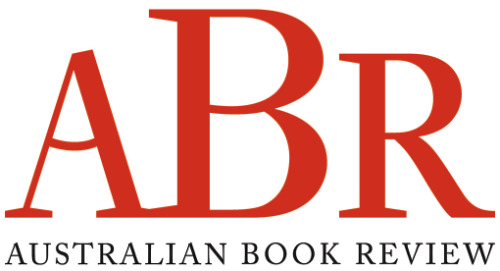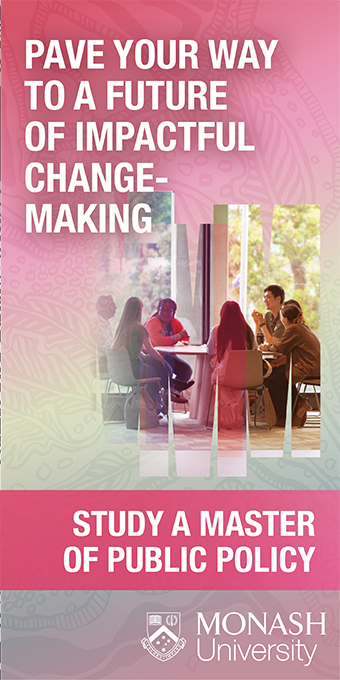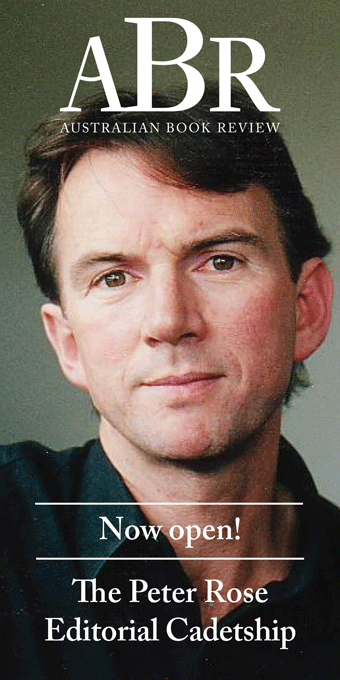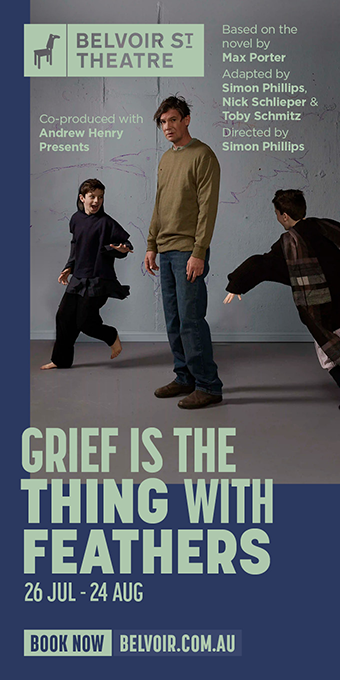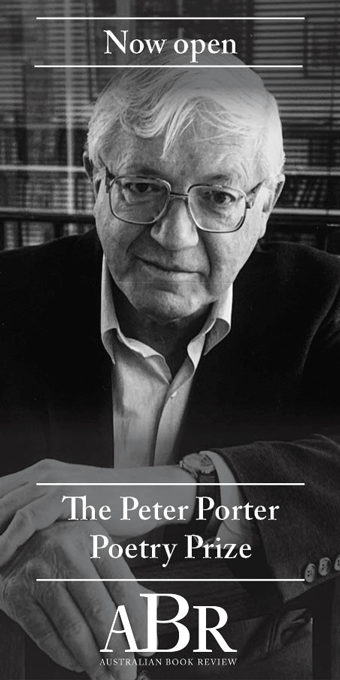Search
- 31. Declan Fry reviews ‘Nonhuman Witnessing: War, data, and ecology after the end of the world’ by Michael Richardson
- (October 2024, no. 469)
- ... then do we invest in the imagistic and linguistic reality that film, photography, and journalism depend upon? Social media here encourages fragmentation, particularly in societies already struggling with ...
- 32. Scott Stephens reviews ‘Liberalism as a Way of Life’ by Alexandre Lefebvre
- (October 2024, no. 469)
- ... out the barest and most meagre of livings – desperate existences forever memorialised in the photography of Dorothea Lange and John Steinbeck’s novel The Grapes of Wrath. The distant thunder of war, ...
- 33. Felicity Bloch reviews ‘Dora B: A memoir of my mother’ by Josiane Behmoiras
- (November 2005, no. 276)
- ... mother: ‘I have observed my mother grow older alongside me and I have recorded our life in a long accumulation of pictures that I can replay in my mind … I should have chosen still photography. My universe ...
- 34. John Thompson reviews ‘Frank Hurley: A Photographer’s Life’ by Alasdair McGregor
- (February 2005, no. 268)
- ... of Australian photography in the twentieth century is complete without the inclusion of iconic examples of Hurley’s work, as witnessed in the current National Library of Australia show, In a New Light: ...
- 35. Stephanie Owen Reeder reviews ‘Belonging’ by Jeannie Baker
- (February 2005, no. 268)
- Human beings have a strong need to belong, whether it be to a family, a community or humanity at large. In Belonging, Jeannie Baker explores this need. She takes the reader on a visual journey through ...
- 36. Letters - May 2005
- (May 2005, no. 271)
- ... During The Summer of Silver (November 2004–April 2005) in Canberra, four of our major institutions presented a wide spectrum of photography exhibitions. Large crowds evidenced the popularity of this ...
- 37. Kerryn Goldsworthy reviews ‘Hecate vol.30, no.2’ edited by Carole Ferrier, ‘Island 99’ edited by David Owen and ‘Griffith Review 7: The lure of fundamentalism’ edited by Julianne Schultz
- (April 2005, no. 270)
- ... every detail draws you in and makes you wonder. This photograph is one of a series illustrating Andrys Onsman’s article ‘Shooting the Song of the Moonbirds’, which uses Maynard’s photography in its examination ...
- 38. Ian North reviews ‘Body Culture: Max Dupain, photography, and Australian culture, 1919–1939’ by Isobel Crombie
- (March 2005, no. 269)
- Like many a portentous new (electronic) media advocate today, the US photographer Paul Strand opined in his 1922 essay ‘Photography and the New God’ that photography unified science and art and therefore ...
- 39. Julie Robinson reviews ‘Intersections: photography, history, and the national library of Australia’ by Helen Ennis
- (March 2005, no. 269)
- Photography was introduced to Australia in the 1840s, with the first photograph being taken in May 1841, in Sydney. Since then, photographic images, in all their permutations (including the more recent ...
- 40. Isobel Crombie reviews ‘An Eye For Photography: The camera in Australia’ by Alan Davies
- (March 2005, no. 269)
- For nearly 100 years before any public art gallery entered the field, the main institutional collectors of Australian photography were state libraries. Primarily, they bought photographs for their informational ...
- 41. Letters - June-July 2005
- (June–July 2005, no. 272)
- ... It obviously depends on exactly how one defines dissent. I responded to it in broad terms: to encompass the work of indigenous photographers (Ricky Maynard, Destiny Deacon), wilderness photography (Peter ...
- 42. Helen Ennis reviews ‘1904: Korea through Australian eyes’ edited by Rodney Hall
- (June–July 2005, no. 272)
- ... isolationism, it had remained largely untouched by photography: those who had taken photographs in the late-nineteenth century were usually amateurs and Westerners rather than Koreans themselves. Rose’s ...
- 43. Susan Sheridan reviews ‘A Secretive Century: Monte Punshon’s Australia’ by Tessa Morris-Suzuki
- (July 2024, no. 466)
- ... as a schoolgirl), photography, and radio (she took on jobs in both areas). She loved the theatre, and participated in both amateur and professional companies (in the latter usually as a teacher). Theatre ...
- 44. Luke Morgan reviews ‘Disclosing Spaces: On painting’ by Andrew Benjamin
- (November 2005, no. 276)
- ... as coming after photography. The art historian might baulk at this, suspecting anachronism, but, if I am reading him correctly, Benjamin is arguing that painting needs to be released from its imprisonment ...
- 45. Michael Sariban reviews ‘The Yellow Dress’ by Yve Louis and ‘The Ancient Capital of Images’ by John Mateer
- (November 2005, no. 276)
- ... observing it, meticulously and speculatively. His eye – ‘the nerves deep in the black box of your skull’ – is indeed a marvellous camera, and photography, actual or metaphorical, is never far from this ...
- 46. Heather Neilson reviews ‘The Cambridge Companion to American Modernism’ edited by Walter Kalaidjian
- (November 2005, no. 276)
- ... of their own originality.’ More than 1200 works by European and American artists – paintings, sculptures and other forms (although, interestingly, no photography, as Michael North points out in his essay, ...
- 47. Peter Menkhorst reviews ‘Owls: Journeys around the world’ by David Hollands
- (March 2005, no. 269)
- ... of his favourite species, some of which he had dreamt of meeting for decades. This passion shines through in the writing and the skilful photographs. Bird photography is a specialised and exacting field. ...
- 48. Evelyn Juers reviews ‘Margaret Michaelis: Love, loss and photography’ by Helen Ennis
- (September 2005, no. 274)
- ... Margaret Michaelis was born Margarethe Gross in 1902, in Dzieditz (Austria, later Poland); when she died in 1985, in Melbourne, she was known as Margaret Sachs. She studied photography at the Institute ...
- 49. James Ley reviews ‘Australian Literary Studies’ edited by Leigh Dale, ‘Meanjin: Portraits of the artists’ edited by Ian Britain and ‘Southerly: Watermarks’ guest Edited by Nicolette Stasko and Mark Tredinnick, ...
- (September 2005, no. 274)
- ... hinge essay is a contribution from Marion Halligan that develops a stimulating but occasionally confused argument about the respective truth claims of painting, photography and fiction. Halligan argues ...
- 50. Patrick Flanery reviews ‘The Adelaide Art Scene’ by Margot Osborne and ‘AGSA 500’ edited by Rhana Devenport
- (June 2024, no. 465)
- ... from migrant artists in the postwar period, to the impact of the Adelaide Central School of Art in the 1980s, to Osborne’s own fascinating work on South Australian photography in the last two decades of ...
